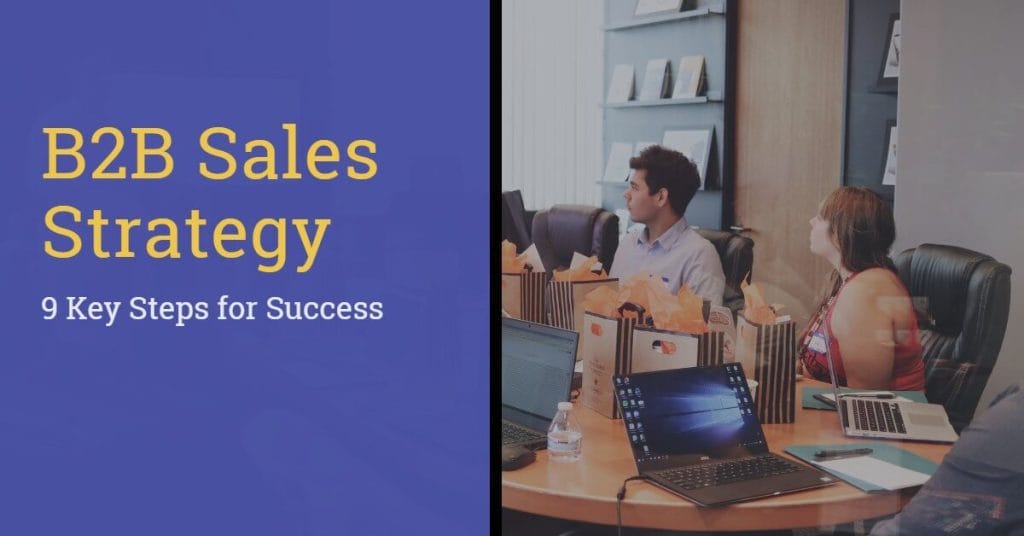B2B sales is different than it was a few years ago.
There are more decision-makers for sales reps to meet and touchpoints for them to navigate through than ever before. These things lead to longer sales cycles.
The average B2B buyer in 2022 is so much more educated than they would have been in the early 2000s, which further complicating matters.
Here are a few stats to prove the complexity of modern B2B sales:
- There are now an average of 6.8 people involved in every B2B purchase.
- 74% of B2B buyers conduct about half of their research online before buying a product offline.
- 46.4% of new B2B customers take six months or longer to close.
How does one succeed in this increasingly difficult sales climate? By developing an effective B2B sales strategy and implementing it the right way.
In this article, we’ll explain what a B2B sales strategy is, the main types of B2B sales strategies available to you, and how to execute your strategy of choice. By the end, you’ll have a pretty good idea of how to succeed with B2B selling.
Let’s get started!
What is a B2B sales strategy, exactly?
To answer that question, we’ll ask you two more:
- What is B2B sales? Business-to-business sales, better known as B2B sales, is what happens when one business sells goods and/or services to another. B2B sales is often more difficult than business-to-consumer (B2C) sales because there are more decision-makers involved, which translates to longer sales cycles. B2B sales usually produce more revenue, however.
- What is a strategy? According to Oxford Languages, a strategy is, “a plan of action or policy designed to achieve a major or overall aim.”
If we combine these two definitions, we understand that a B2B sales strategy is:
A plan of action that will help your company increase sales to other businesses and reach its goals in a structured and timely manner.
Here’s the good news: you don’t have to pull your B2B sales strategy out of thin air. There are multiple, proven strategies available to you. Let’s talk about them…
Main types of B2B sales strategies
If you want to find success with B2B selling, you have to implement the right strategy. Here are four B2B sales strategies that might work for your company.
Strategic selling
Developed by the Miller-Heiman Group, strategic selling is all about identifying who you need to talk to and what you need to say to them to close a deal.
If you were attempting to sell a project management tool, for example, you’d likely want to contact the company’s marketing and/or operations managers.
Once contacted, you may realize that the marketing manager will be your champion, i.e. the person who really promotes your tool within his or her company. The operations manager, on the other hand, makes final purchasing decisions.
With this knowledge, you can clarify the benefits of your project management tool to the marketing manager first. When they’ve become interested in what you sell, you can teach them how to convince the operations manager to make a purchase.
This B2B sales strategy works because it accounts for every decision-maker in the B2B sales process, thus enabling sales reps to close more deals.
Solution-based selling
When deploying the solution-based selling strategy, your sales reps’ number one priority will be pinpointing the specific needs of their prospects. Once these needs are known, they’ll suggest solutions that will fix their current issues.
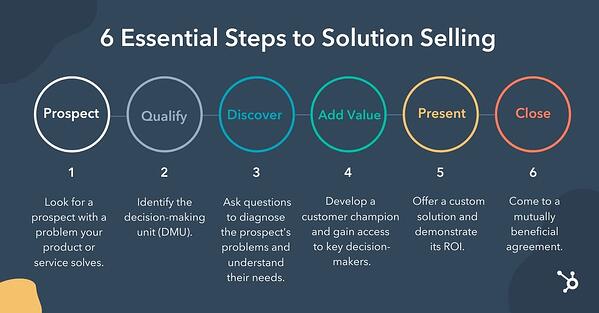
Let’s say, for example, that your company sells high-end consulting services.
When talking to a potential customer, your reps will ask questions to learn about the prospect’s specific pain points. They will then evaluate the information they receive and ask themselves, “Does this company fit our ideal customer profile?”
If the answer is “yes,” they’ll begin to show the prospect how your company’s consulting services can help them overcome their challenges. Then they’ll offer a customized consultation package that fits the exact needs of the prospect.
This B2B sales strategy works because it makes prospects feel valued. It also leads to stronger relationships, which often results in more sales.
Account-based selling
Account-based selling is a complex B2B sales strategy that encourages sales reps to connect with multiple stakeholders within a company.
To implement an account-based selling approach, your reps will need to research your company’s target market to learn which organizations might want to make a purchase. Next, they’ll learn about the common challenges these kinds of companies face and who the main decision-makers are within each.
When all this research has been accomplished, your reps will develop custom solutions that will solve the various problems their target accounts have.
Finally, your sales reps will contact the stakeholders they’ve identified, start conversations with them, and pitch the custom solutions they’ve designed.
As you can see, account based-selling is research-intensive. Because of this, it’s generally best for companies with long and complex sales cycles. Does that sound like your organization? Then you might find success with this B2B sales strategy because it will enable you to connect with multiple stakeholders.
Social selling
Last, but certainly not least, we have social selling, the B2B sales strategy that leverages social media networks like LinkedIn and Facebook to make sales.
Let’s pretend that your company sells CRM software. To secure subscriptions to your solution via social selling, your sales reps will optimize their social media profiles so that future connections know exactly what they sell.
Once their profiles are optimized, they’ll reach out to potential customers and establish online relationships with them. Then, your reps will share CRM related content to establish themselves as experts in their fields.
After a suitable amount of time, your sales reps will strike up conversations with prospects and attempt to turn them into paying customers.
This B2B sales strategy works because it makes relationship-building the number one priority. When you establish real relationships with prospects, you can have deeper, more meaningful conversations with them, which will result in more sales.
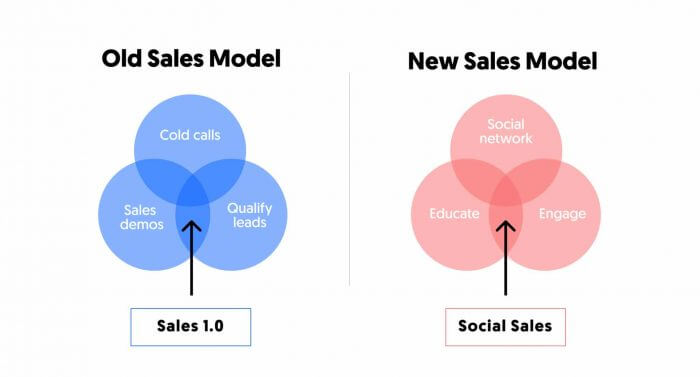
(Source)
How to execute a successful B2B sales strategy
It doesn’t matter which of the four B2B sales strategies you use. There are common steps every inside and outside sales team needs to take to plan, build, and execute it successfully. Keep these things in mind while implementing yours:
Develop an ideal customer profile (ICP)
Your B2B company can’t sell to everyone—and it shouldn’t try to.
Instead, develop an ideal customer profile (ICP) and ask your reps to focus on these companies exclusively. This will ensure their time is well spent.
If you’re not familiar with the term, an ICP is a fictional company that would benefit from the products and/or services you sell. Once created, you can use your ICP to evaluate real-world organizations to see if they’d be good fits for what you offer.
To develop an ICP for your B2B company, simply:
- List Your Best Customers: Search through your customer base and choose five to ten customers that get immense value from your products/services.
- Look For Common Attributes: Study these five to ten customers. What do they have in common? Their industries, budgets, and challenges all count.
- Conduct Deep Research: Take time to learn about these companies. How do they use your products? What pain points do said products solve?
- Fill Out an ICP Template: Finally, input all of the information you uncover into a template that includes the customer’s industry, location, size, budget, pain points, business objectives, and any notable attributes.
Define your unique selling proposition
Next, answer the question:
“Why should our customers buy from us instead of the competition?”
This is so important! You’ll have a hard time implementing your B2B sales strategy if your reps don’t know what differentiates your brand and products/services.
Is your product cheaper? Does it do more things? Maybe your product has one specific feature that others don’t. Or maybe your company offers better customer service. An incredible warranty and/or return policy can be differentiators, too.
Whatever your unique selling proposition is, make sure your reps understand it.
Map content to the buyer journey
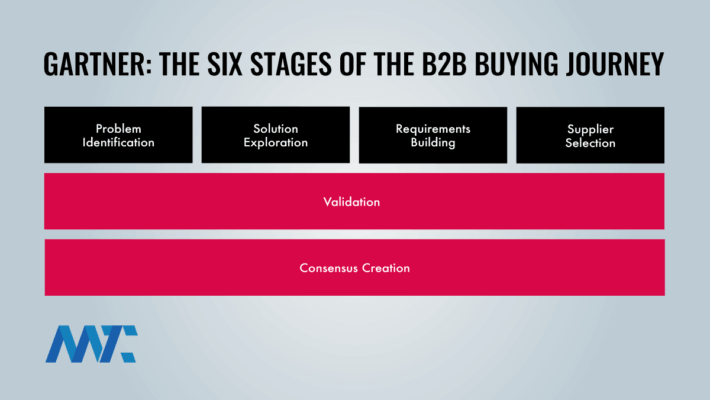
Did you know that 49% of decision-makers say thought-leadership content influences their buying decisions? Or that 89% of decision-makers claim that stellar content has improved their perception of an organization in the past?
In other words, content is essential to an effective B2B sales strategy.
Best case scenario: your company’s marketing team has already created top-level blogs, eBooks, whitepapers, and case studies that your reps can use to close deals. If not, create them yourself by answering the questions your prospects have.
Once you have the right pieces of content, share them with prospects at the appropriate stage in the buyer’s journey. Most blogs, for example, should be shared at the beginning stages, while white papers and case studies can be saved for later.
Identify your sales channels
So far, you know who your reps need to contact, the unique value your company brings to the table, and the kind of content you need to share with prospects to encourage purchases. Now, let’s talk about actually contacting them.
Think about your sales channels on two levels:
- The Macro Level: Will you deploy an inside, outside, or hybrid sales model?
- The Micro Level: Will you use email, cold calls, in-person visits, or some other other channel to communicate with potential customers?
Once you’ve identified your best options, consider investing in a tool like SPOTIO, which will enable your reps to easily engage prospects via a variety of communication channels and automatically capture the activity for your CRM.
Set sales targets
Now it’s time to set goals.
What do you want to achieve in the next month, quarter, and year? These goals should be clear to your entire sales team so that you can all work towards them.
The key to goal-setting is to use SMART goals. A SMART goal is:
- Specific: Your goals should be clear and unambiguous.
- Measurable: Your goals should have concrete criteria to determine progress.
- Attainable: Your goals should be challenging, yet realistically achievable.
- Relevant: Your goals should align with your company’s overall objectives.
- Time-Bound: Your goal should have specific deadlines.
What do SMART goals look like in real life? Something like this:
Our department would like to boost sales this quarter by 10%, which we will accomplish by improving our lead qualification process so that reps only focus on the best prospects, and investing in more sales enablement content.
Prospect with ICP data
At this point in your B2B sales strategy, you know who to contact. The next step is to find out where these people hang out, online and off.
The easiest way for outside sales teams to prospect is to use a tool like SPOTIO’s Lead Machine. Using 200+ filters, Lead Machine will help you pinpoint the perfect commercial and/or residential prospects with a few clicks of your mouse.
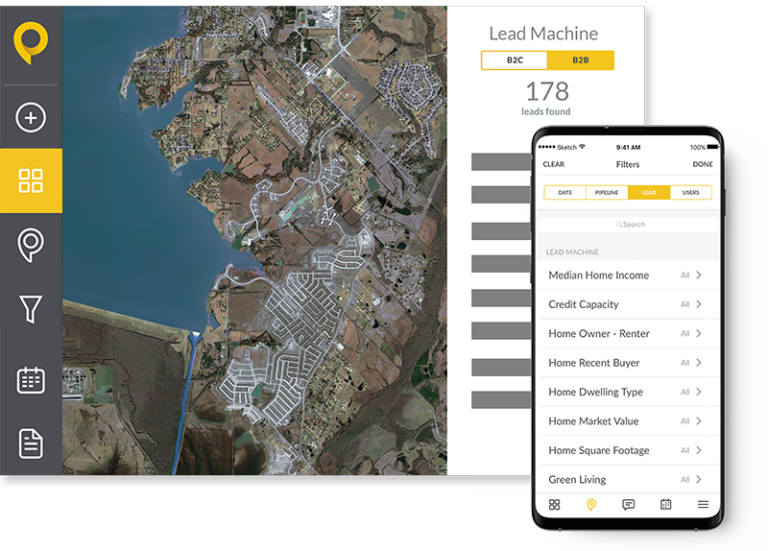
Once you’ve generated a list of prospects, we suggest rating them based on how well they fit your ICP. For example, good fits would receive three stars, decent fits would receive two, and bad fits would receive three.
This will make it easy for reps to see which prospects to spend the most time on.
Set minimum daily sales activities
At the end of the day, your sales reps can’t control which of their prospects make purchases. But they can control the number of calls they make, emails they send, follow-up visits and social media connections they make, etc.
As a sales manager, you need to set minimum daily sales activities to keep your reps accountable. If you don’t, there’s a chance they’ll slack off.
If you really want to help your sales reps close more deals, consider creating entire sales sequences for them using SPOTIO Autoplays.
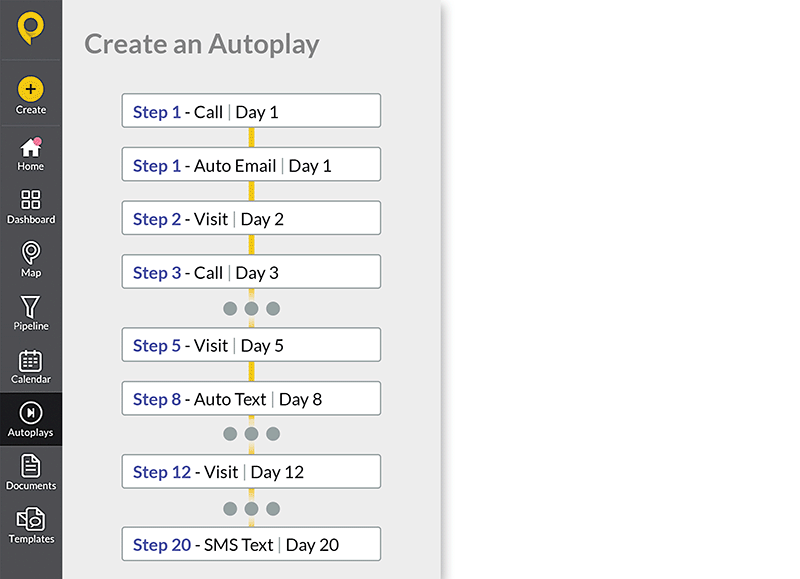
Autoplays will allow you to build and deploy sequences of sales activities, which can be customized to each individual prospect in your pipeline. Said sequences can include call and visit reminders, as well as automated emails and texts, too.
Basically, Autoplays will tell your reps which activity to do and when, ensuring minimum sales activity goals are met and nothing falls through the cracks.
Make contact and follow up
You’ve come a long way in your B2B sales strategy, researching prospects, identifying your USP, and even setting sales targets and minimum activity goals.
Now it’s time to buckle down and to start contacting prospects. This is where the rubber meets the road and all of your reps’ hard work starts to bear fruit.
Just remember: first contact is essential. But your reps won’t close many deals on the first try. According to research, 80% of sales require at least five engagements. This is why following-up with prospects is so important.
If your sales numbers aren’t as impressive as you’d like, check to see how many times your reps follow-up. The number is probably lower than it should be.
Track activity and performance
The final piece of the B2B sales strategy puzzle is performance tracking.
You never want to fly blind, so to speak. Instead, learn exactly how many leads, opportunities, sales, and revenue your strategy is generating. That way you can make adjustments if necessary and maximize results.
SPOTIO’s Sales Tracking feature will give you the insights you need.

Enable B2B sales reps with the right technology
A B2B sales strategy is essential to your organization’s success. The only thing you need to do now is choose the right one and implement it effectively.
The implementation side of the equation will be much easier if you equip your sales reps with the best technology. You wouldn’t expect a plumber to fix your sink without a wrench, right? Sales reps need proper tools, too.
Once your reps have the right tools at their disposal, they’ll be able to complete all of the B2B sales strategies and tactics we talked about in the article.
The question is, which tools do your reps need? If you manage an outside sales team, the answer is clear: you need SPOTIO.
SPOTIO was specifically designed for outside sales teams. As such, it includes all of the features your reps need to succeed in the field, including:
- Task Automation
- Route Planning
- Territory Management
- Multichannel Communication
- Appointment Setting
- Sales Tracking
Sign up for a free demo of SPOTIO today to see if it’s right for your team.
